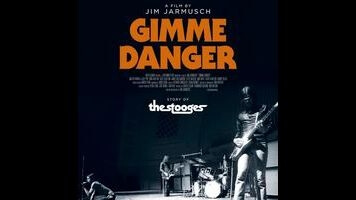Jim Jarmusch gives Iggy Pop the usual rock-doc treatment in Gimme Danger

If Jim Jarmusch were a type of music, which one would he be? Over the course of three decades as a filmmaker, he’s worked with a wide variety of musicians: John Lurie, Screamin’ Jay Hawkins, Joe Strummer, Tom Waits, Neil Young, Jack White and Meg White, GZA and RZA, and on and on. His own band, SQÜRL, plays droning avant-garde noise rock in a vaguely Boris vein. One musical genre Jarmusch decidedly does not embody, however, is punk—his sensibility is far too laid-back to express that sort of raw power. So while it’s not surprising that he’s chosen to make a documentary about Iggy Pop And The Stooges (Iggy having previously played small roles in Dead Man and Coffee And Cigarettes), viewers making the same demand as Gimme Danger’s title will likely be disappointed. Considering how cheerfully its subject courted controversy, this is a chummy, openly booster-ish profile, designed as an introduction for those ignorant of the Stooges’ legacy. It’s plenty entertaining, but it’s also nearly as tame as Iggy, in his prime, was wild.
Proceeding mostly in chronological order, Gimme Danger spends some time getting to know young James Osterberg Jr. (Iggy’s birth name), who grew up in a trailer park and seemed a fairly poor bet for future stardom. The film’s primary goal, though, is to explore the influence of the Stooges’ three classic albums—The Stooges (1969), Fun House (1970), and Raw Power (1973)—on the punk revolution that followed a few years later. Talking to Jarmusch behind the camera like the friend that he is, Iggy reminisces about meeting brothers Ron and Scott Asheton, who played guitar and drums, respectively, and about the band’s initial efforts at composing music that was deliberately antimelodic, if not downright atonal. Subsequent topics include the evolution of Iggy’s stage persona (including his penchant for crowdsurfing, a concert staple that he may well have originated); Iggy’s serious heroin addiction, which frequently rendered him incapable of performing and directly precipitated the Stooges’ 1974 breakup; and the deaths of both Ashetons, a few years after the Stooges had reunited and begun recording and touring again. (Oddly, the band officially broke up between Gimme Danger’s premiere at Cannes back in May and its commercial release this week.)
An unqualified fan (verging on fanboy), Jarmusch is entirely content to serve as head cheerleader here. His skill as a director livens up what’s generally a pretty straightforward rock doc; in order to avoid a monotonous rhythm of talking heads interspersed with archival footage, he repeatedly inserts clips from old movies as comic punctuation and throws in some animated interludes as well. But he’s not prone to delve, and longtime fans who are curious about such matters as, say, David Bowie’s notoriously treble-heavy mix of Raw Power (which the band despised) will be disappointed to find that they’re addressed only in passing, if at all. Had the Stooges not already been inducted into the Rock And Roll Hall Of Fame (in 2010), Gimme Danger could easily be mistaken as a feature-length argument that it’s high time they were selected. Those who know nothing about the band going in will be apt to assume that they’re far more obscure than they actually are. Jarmusch’s other 2016 movie, Paterson (coming in December), is a major work, one of his best. This amiable trifle—like his Neil Young doc, Year Of The Horse—will be a footnote.